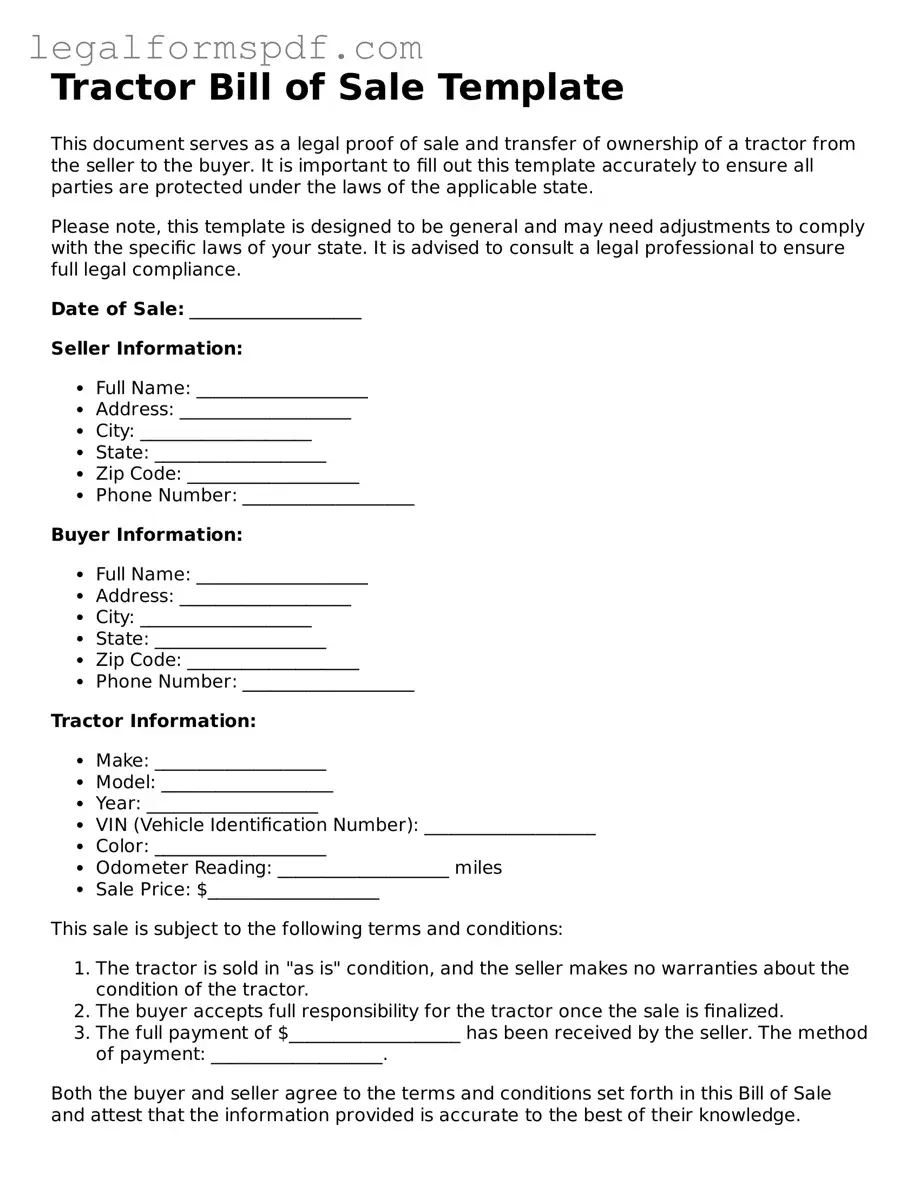One common mistake made when filling out a Tractor Bill of Sale form is neglecting to check the accuracy of the buyer and seller's personal information. This includes full names, addresses, and contact information. Such oversight can lead to significant problems in the event of a dispute or if the document needs to be used for legal purposes.
Another error involves the description of the tractor itself. Often, individuals fail to provide a detailed description or omit important information such as the make, model, year, serial number, and any unique features or modifications. This lack of detail can lead to confusion and potentially, questions of the tractor's identity if issues arise post-sale.
Failing to specify the terms of sale is also a common mistake. This includes the sale price, payment method (such as cash, check, or transfer), and the payment schedule if not made in full at the time of sale. Without this crucial detail, the agreement's terms can become ambiguous, paving the way for misunderstandings or disputes later on.
Many individuals overlook the importance of stating the condition of the tractor at the time of sale. It's vital to clarify whether the tractor is being sold "as is" or under warranty. If this aspect is not clearly defined, it may lead to legal challenges, especially if the buyer encounters unexpected issues after the purchase.
Another common oversight is not including a statement regarding the tractor's title and any liens or encumbrances against it. Buyers should be made aware of the tractor's title status and of any financial obligations attached to it. Failure to disclose this information can render the sale illegal and possibly subject the seller to legal penalties.
Also, people often forget to add an odometer disclosure statement, if applicable. This statement confirms the reading of the tractor's odometer, providing an assurance about its use and condition. Omitting this information could mislead buyers about the tractor's usage history.
The date of sale is sometimes inaccurately recorded or completely missed. The correct date is essential for legal and record-keeping purposes, helping to establish when the ownership officially changed hands. Incorrect dating can lead to unnecessary legal complications.
Signatures are another critical component that is sometimes mishandled. Both the buyer and the seller must sign the Bill of Sale to validate it legally. Without these signatures, the document may not be recognized as a binding contract, significantly undermining its purpose.
Acknowledging the receipt of payment is often forgotten but is a vital step. The document should confirm that the seller has received full payment for the tractor. This protects the seller from claims of non-payment and helps to resolve any future disputes over the sale.
Lastly, not consulting a legal professional for advice or a review of the document can be a significant oversight. Given the legal ramifications of such a transaction, having a professional ensure the completeness and accuracy of the Bill of Sale can prevent potential legal issues. This is particularly important for a document that serves as evidence of ownership and the transfer of legal rights.
